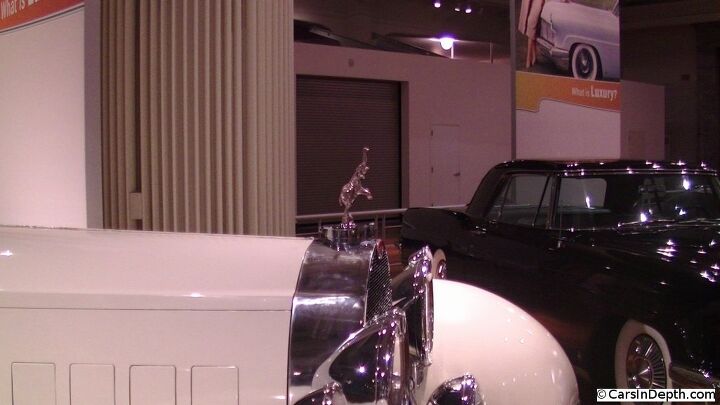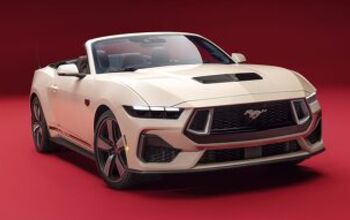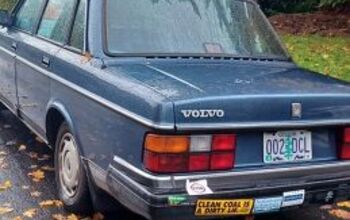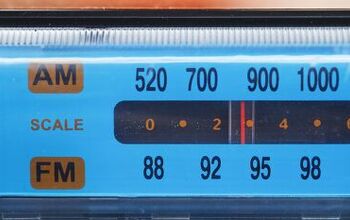Bugatti Royale: The Most Magnificent Car In The World?

Our friends over at Jalopnik ran a post on cars so important to you that you’d make a pilgrimage to see them. I really can’t quibble with the ten *cars that made their final cut, mostly because I’ve seen and photographed three of them myself, a Chrysler Turbine Car, the Gulf Oil liveried Ford GT40 that twice won at LeMans, and a Bugatti Royale. Now fortunately for me, my pilgrimage to see those cars didn’t involve crossing an ocean or getting on an airplane. It was more like getting on the Southfield freeway and driving 20 minutes to the Henry Ford Museum in Dearbon, Michigan. The museum is surely pilgrimage-worthy as it owns one of the eight extant Chrysler Turbines, one of the six Bugatti Royales that were made, and for a while the 1968-69 LeMans winner was in the museum’s Racing In America exhibit while the 1967 LeMans winning Ford Mk IV was being repaired. We recently looked at the Mk IV and not long ago featured the Gulf colored GT40, plus the Chrysler Turbine cars are pretty well known, so this is a good opportunity to talk about the Bugatti Royale.
There are cars that are special. If you get a chance to see a Duesenberg Model J with your own eyes, you immediately understand why “It’s a Duesey!” became an idiom for supreme excellence. Likewise, a Cord 810, so low slung and radical for its day, will grab your eyes when sitting a midst the Packards and Cadillacs of that era. The same is true of the 1956 Continental Mark II, considered one of the most beautiful cars ever made, hand assembled with visible build quality. Any one of those cars could be the centerpiece of a magnificent car collection, so it takes a superbly magnificent automobile to make a Duesenberg, a Cord and a Continental look almost ordinary, a little less special. The Ford museum’s Bugatti Royale sits right next to those illustrious automobiles and it does exactly that. Duesenbergs are large, impressive cars, but it’s possible that when the word massive was coined, it was waiting for the Royale to illustrate its dictionary entry. It’s not just big, it is a beautiful and stunning piece of human creation.
Ferraris have a prancing horse. Bugattis have a dancing elephant, sculpted by Ettore Bugatti’s brother, Rembrandt Bugatti. Full gallery here.
Ettore Bugatti planned to build 25 Royales, also known as the Type 41, hoping to sell them, as the name indicated, to royalty. Unfortunately for Bugatti, the Great Depression had depressed the market for $30,000 automobiles, a bit more than a half million 2014 U.S. dollars. By comparison, when the Ford V8 was introduced in 1932 it’s starting price was $495. Henry Ford sold over 300,000 cars in 1932. Ettore Bugatti ended up making only 6 Royales and while ’32 Fords are indeed some of the most collectible cars you’ll find, the Bugatti Royale takes collectible a few quantum leaps higher.
Of those six Royales, two of them are in the French national automobile museum, the confiscated Schlumpf brothers’ collection. Volkswagen, which owns the Bugatti brand, owns a third. A fourth is in a private collection in Switzerland and the fifth is part of the Blackhawk collection. So if you want to see a Bugatti Royale, you’re going to have to go to either Europe or California… or Detroit. Well, properly speaking Dearborn. As mentioned, the Henry Ford Museum’s Driving America exhibit contains a number of great and historically significant cars, but the jewel in the collection has to be Bugatti chassis no. 41-121, known as the Cabriolet Weinberger. 41-121 has a colorful history, traveling all around the world before ending up in Dearborn.
Ordered for his personal use by Dr. Joseph Fuchs, a German who was successful at both his vocation, medicine, and his avocation, racing cars. Delivered in 1931, Dr. Fuchs contracted with the Weinberger coachbuilding company of Munich to body the the 169.3-inch wheelbase chassis. He took delivery the following year.
Soon after Adolph Hitler was elected chancellor of Germany and the Nazis came to power in 1933, Fuchs first went to Switzerland before traveling on to Shanghai, China, then a pretty wide open city. When considering refugees from the Nazis and their connection to Shanghai, one might conclude that Dr. Fuchs may have been Jewish, but none of my research indicates that he was other than a German who didn’t like the Nazis.
Fuchs had the massive car shipped to China but in 1937, with imperial Japanese soldiers advancing in the south of China he left Asia for North America, first moving to Canada and then to New York City. The winter of 1937-38 was a cold one in the Big Apple and the block for the model J’s 12.7 liter straight eight engine froze up and cracked. After unsuccessfully trying to sell it the car was sold for scrap to a junkyard in the Bronx.
One of the things that made Bugattis advanced for their day was the extensive use of aluminum. Amazingly, the aluminum intensive car survived early World War II era scrap drives.
In 1943, Charles Chayne, the chief engineer for Buick and one of the pioneers of the car collecting hobby, found out about the junkyard Bugatti and bought it, shipping it back to Detroit. Following the end of hostilities, in 1946 he started to repair the engine and restore the Bugatti in general, finishing it the following year.
Today we’d call it a restomod because Chayne wanted it to be a driver, not a museum piece. He replaced the original single carburetor with four Stromberg units mounted on a custom intake manifold (possibly of his own design). For all of his advanced ideas, Ettore Bugatti was set in his ways and he never stopped using mechanically activated brakes (Henry Ford also was a fan of mechanical brakes). To drive the car safely Chayne had the braking system swtiched to hydraulics. The car’s original black finish was repainted in oyster white, with a contrasting dark character stripe featuring Chayne’s monogram on the door. A tall man, Chayne also modified the interior to fit him better.
Charles and Esther Chayne donated the Bugatti Royale Weinberger Cabriolet to the Henry Ford Museum in late 1950s. For most of the time since then it’s been on static display but seven years ago the museum hired Classic & Exotic Services, a high end Detroit area restoration shop to get it running so it could be driven onto the show field at the Meadow Brook Concours (now the Concours of America at St. John’s).
Many people who have never visited the Henry Ford Museum are under the mistaken impression that its transportation collection must focus on Ford automobiles. While there certainly are many historically significant Fords, it’s a well curated museum that gives credit wherever it is due. If you make an automtive pilgrimage to the Dearborn museum, you’ll see marques from around the world of cars and trucks, so it shouldn’t surprise you that one of biggest stars of Henry Ford’s museum’s collection is a French masterpiece with Buick connections.
*The top ten pilgrimage cars post at Jalopnik lists a Type 57 Bugatti as being at the Henry Ford Museum, but something must have gotten lost in translation because the commenter credited with making that suggestion actually mentioned the Bugatti Royale at the Ford museum, not a Type 57 ( you can see a Type 57 Bugatti that was a best-of-show winner at Amelia Island in 2012 here). As far as I’ve been able to determine, the Henry Ford Museum does not have a Type 57 in its collection. Also, the Jalopnik article says that you can see the 1968-69 LeMans winning Gulf livery Ford GT40 at the Henry Ford Museum but, as was pointed out in a recent TTAC post and mentioned above, that car was on temporary loan to the Henry Ford while the museum’s own 1967 LeMans winning Gurney/Foyt Ford Mk IV was being repaired and preserved. Now that the Mk IV has been fixed, the Gulf liveried car has been returned to its owner.
Ronnie Schreiber edits Cars In Depth, a realistic perspective on cars & car culture and the original 3D car site. If you found this post worthwhile, you can get a parallax view at Cars In Depth. If the 3D thing freaks you out, don’t worry, all the photo and video players in use at the site have mono options. Thanks for reading – RJS

Ronnie Schreiber edits Cars In Depth, the original 3D car site.
More by Ronnie Schreiber
Latest Car Reviews
Read moreLatest Product Reviews
Read moreRecent Comments
- 3-On-The-Tree My 2009 C6 corvette in black looks great when it’s all washed and waxed but after driving down my 1.3 mile long dirt road it’s a dust magnet. I like white because dust doesn’t how up easily. Both my current 2021 Tundra and previous 2014 Ford F-150 3.5L Ecobomb are white
- Bd2 Would be sweet on a Telluride.
- Luke42 When will they release a Gladiator 4xe?I don’t care what color it is, but I do care about being able to plug it in.
- Bd2 As I have posited here numerous times; the Hyundai Pony Coupe of 1974 was the most influential sports and, later on, supercar template. This Toyota is a prime example of Hyundai's primal influence upon the design industry. Just look at the years, 1976 > 1974, so the numbers bear Hyundai out and this Toyota is the copy.
- MaintenanceCosts Two of my four cars currently have tires that have remaining tread life but 2017 date codes. Time for a tire-stravaganza pretty soon.








































Comments
Join the conversation
I have been to the Schlumpf collection in Mulhouse, France. It's awesome but overwhelming. So much to see there. If you're in Europe in the area of Basle, it is very worthwhile to visit. Of their three Royale's, I think the Esder Spider (arguably a replica) is the best looking.
I remember seeing the Bugatti Royale Kellner Coupe at the Briggs-Cunningham Museum in Costa Mesa, CA as a teenager. The place was nearly empty and an elderly gentleman in overalls came out from the workshop when he saw us milling about. He gave us a informal tour and when he got the the Royale explained the classic design theory that informs the profile. The A-pillar is at the mid-point between the axles, the radiator grill is at the front axle, and the rear window is at the rear axle. This image makes it all clear: http://www.vintagecartalk.com/wp-content/uploads/2013/09/1931-Bugatti-Royale-Kellner-Coupe.jpg We later learned the gentleman was Briggs Cunningham himself.